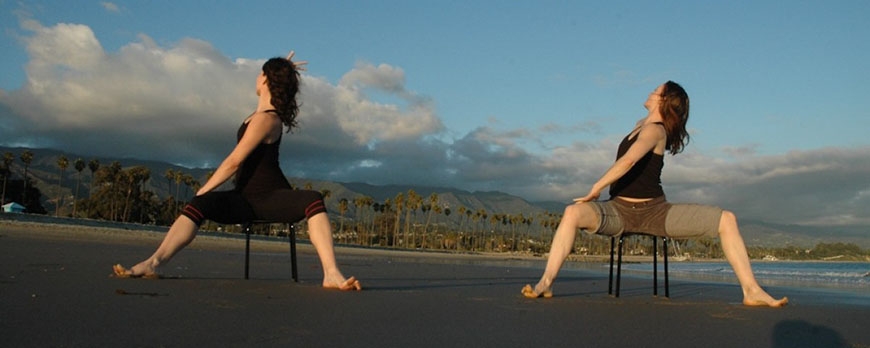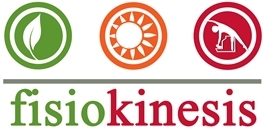
Fitness regimen focuses on mobilizing the spine to increase flexibility.
Fitness regimen focuses on mobilizing the spine to increase flexibility.
Sabrina Aspesi straddles a wood and metal exercise machine that resembles a reincarnation of a medieval torture rack – complete with pulleys, chains and weight plates. Her torso bends forward and back, arms and hands pushing and pulling two large knobs in fluid, sweeping, circular movements – as if stirring a giant vat of milk.
This is the Gyrotonic workout, a regimen that some fitness-industry observers say is poised to be the biggest thing since Pilates.
Gyrotonic exercise has the greatest potential for meteoric rise out of 10 fitness trends and equipment, according to an exercise-industry survey that IDEA Health & Fitness Association released this month. "It sort of reminds me of where Pilates was a long time ago when nobody had heard of Pilates," said Kathie Davis, executive director of IDEA. "Gyrotonic exercise started out small, and now it's starting to gain momentum."
The regimen fuses elements of yoga, gymnastics, swimming and ballet. It began in the late '70s when its founder, dancer Juliu Horvath, designed "yoga for dancers" and gave it a name: Gyrokinesis.
That floor workout required no equipment except for a stool for some movements.
In the '80s, Horvath designed the Gyrotonic Expansion System, a five-piece set that uses the principles of Gyrokinesis to strengthen and stretch muscles, maximize range of motion and improve coordination.
The centerpiece of the system is the pulley tower combination, which consists of a padded bench with movable knobs and a vertical machine with pulleys and weight plates.
Practitioners of Gyrotonic exercise and Gyrokinesis, such as Victoria Leonard, founder of Beau Corps Studio in Tustin, believe that the repetitive, flowing circular movements are "setting good nerve pathways." The body and the mind together learn proper movements that can be applied to daily life.
Comparisons to other mind-body practices such as Pilates and yoga are inevitable. While both Gyrokinesis and yoga can improve flexibility, Gyrokinesis does not require holding a pose.
Like Pilates, Gyrotonic exercise involves using a contraption with pulleys. But Pilates emphasizes stabilizing the body's core, while Gyrotonic exercise stresses mobilizing the spine through arching, bending, curling, spiraling and twisting movements.
So if it's been around, why are people turning to this regimen now?
"People are always looking for the newest, hottest, most interesting workout," Davis said.
Reports that Madonna, Teri Hatcher and Liv Tyler and athletes such as Steve Finley have been doing Gyrotonic exercise add to its cachet.
But others care less about the celebrity mystique and more about coping with health problems. People with injuries or medical conditions who are looking for ways to manage pain and improve mobility are among Gyrotonic's most ardent followers, said Elizabeth Ando, founder of Ando Studio in Anaheim Hills.
Toni Juliano, 56, of Anaheim Hills thought she'd never be able to return to the competitive ballroom dance floor after she injured her vertebrae during exercise. But after taking Gyrokinesis with instructor Sue Okuda at Ando Studio for two years, Juliano more than bounced back.
"People were telling me, 'Now how do you go from retiring due to a back injury to coming back in two years and winning the nationals?" Juliano mused.
The movements of Gyrokinesis, Juliano said, helped her get in better touch with her dancer's body in a way that other practices didn't. "Gyro gets you fluid like seaweed," she said. "It gets you connected."
The body moves somewhat like a whip in slow motion in Gyrokinesis, Juliano said. The head is like the tip of the whip, and the feet are the handle.
These days, Juliano continues to take Gyrokinesis to stay flexible and fluidly graceful, not just for dancing, but to maintain healthy posture. "I'm going to be 5'7" and have a straight back when I'm 90," said Juliano, who stands 5 feet 6 inches.
Aspesi, a real estate agent based in Newport Coast, turned to Gyrotonic exercise after a fall from a ladder damaged her sciatic nerve. "It was hard to walk, stand or sit for more than 10 minutes," Aspesi said.
"Every doctor and physical therapist told me only surgery could fix the problem," she said. "But I wanted to stay out of surgery."
Aspesi heard about Gyrotonic exercise and decided to take private sessions twice a week on the Gyrotonic expansion system with Beau Corps Studio's Victoria Leonard.
For her, the benefits were more than physical – they were mental. The pain is still there – but it has become tolerable. "I used to be inhibited about moving," she said. "Gyrotonic unwinds the body. You get into the mindset of letting go, getting out of your box."
Despite the kudos, there are no studies that show whether exercise on the Gyrotonic expansion system and Gyrokinesis are safe and effective. But the company is in talks with researchers to conduct such studies, said Matt Aversa, vice president of Gyrotonic and GyroKinesis International Headquarters in Dingmans Ferry, Pa.
The company tries to reduce the risk of injury to participants by requiring Gyrotonic and Gyrokinesis instructors to undergo a rigorous training program that includes apprenticeship with a master trainer for at least six months, according to Aversa.
Still, people can buy a home version of the pulley tower combination for $395 and learn the movements via an instructional DVD. While the company can't stop people from choosing how they learn, Aversa emphasized the importance of private instruction.
"Ideally, people should go to a teacher to learn it and use the home equipment after their instructor tells them they can safely continue to practice at home."
